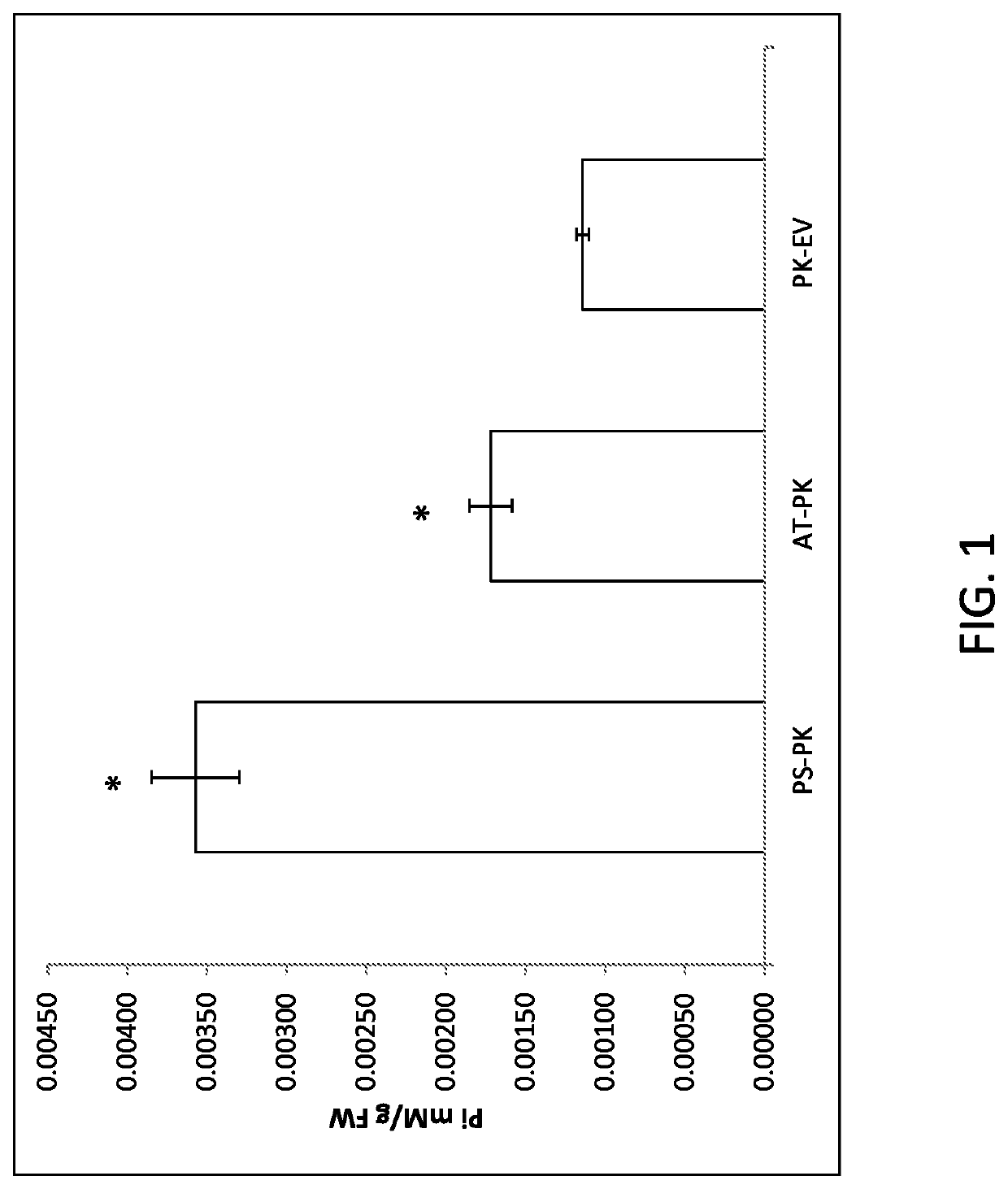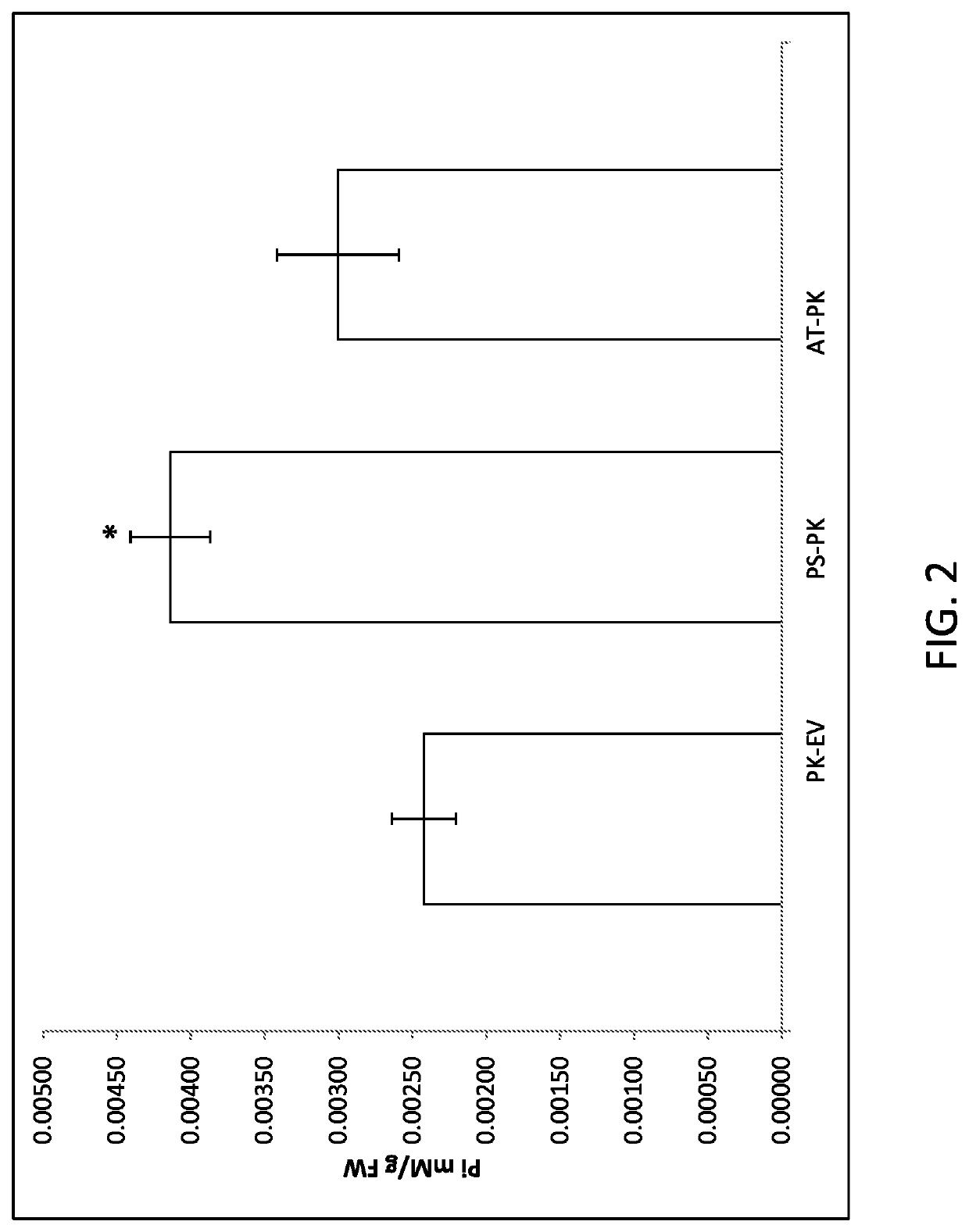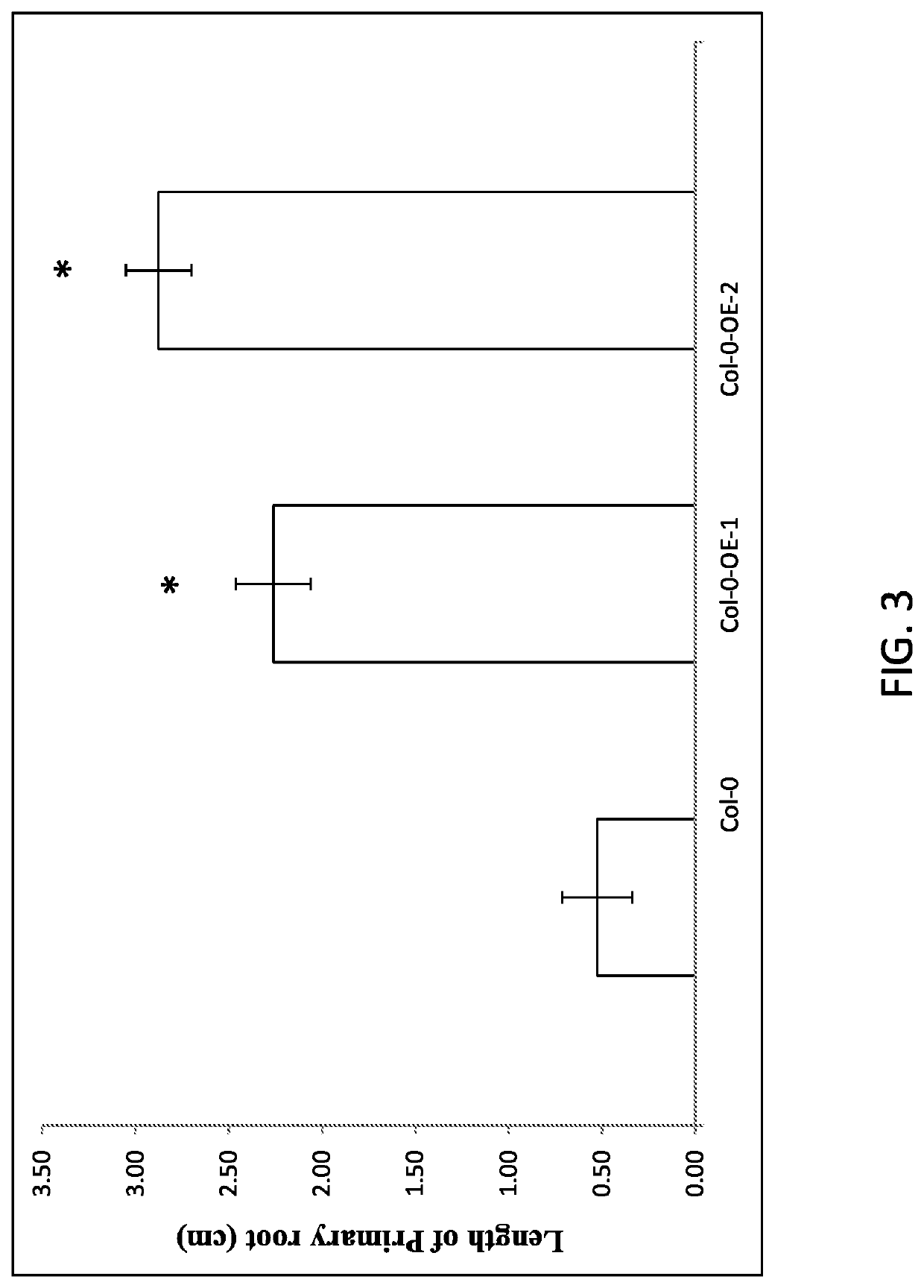Modified plants containing combination of apyrase genes and method for making modified plants with combination of apyrase genes
a technology of apyrase and apyrase gene, which is applied in the field of apyrase genes, genetically modified plants, and expression of apyrase genes, can solve the problems of early studies being restricted, affecting the later stages of plant growth and seed productivity, and unable to predict whether constitutive expression of apyrase gene would have any impact on seed productivity
- Summary
- Abstract
- Description
- Claims
- Application Information
AI Technical Summary
Benefits of technology
Problems solved by technology
Method used
Image
Examples
example 1
[0075]Two studies on crop plants revealed that constitutive expression of pea apyrase (psNTP9) can enhance the seed productivity of soybean and Arabidopsis grown on soil under conditions of normal or sub-normal fertilizer applications. Additionally, this enhanced apyrase expression can promote the uptake of phosphate into the roots of plants, even at concentrations of phosphate lower than 2 mM, such as those typically found in fertilizers. Finally a modified version of psNTP9 was generated that promotes phosphate uptake even more than the wild-type psNTP9.
[0076]Transformation: Arabidopsis WS and Col-0 ecotypes were transformed with psNTP9 using previously described methods (Zhang et al., 2006, relevant methods incorporated herein by reference). Soybean and cotton hairy root cultures were transformed with psNTP9 and modified versions of psNTP9 using previously described methods (Cho et al., 2000; Kim, 2013, relevant methods incorporated herein by reference). Soybean (Glycine max (L.)...
example 2
[0112]In another study, expression of the pea apyrase gene psNTP9 conferred improved drought tolerance in transgenic A. thaliana compared to wild-type and empty vector plants.
[0113]Protocol: Wild-type (Col-0) and transgenic seeds of A. thaliana were sterilized and sowed on ½ MS media. The transgenic seeds were taken from the same lines used in the Arabidopsis yield assays. The lines were: EV-1=Empty Vector control line; Col-0=wild-type control line; HE-1, HE-2, HE-3=High Expresser lines ectopically expressing psNTP9; ME-1=Moderate Expresser line ectopically expressing psNTP9.
[0114]Seeds were planted and grown in soil to obtain seedlings after 10 days. For drought stress, 10-day-old Arabidopsis plants were subjected to drought stress (withheld water) conditions for 21 days. The well-watered plants were treated as control. Eight pots containing 5 plants of each line (40 plants) were used in each biological repeat. The drought treated plants were re-watered after 21 days of drought str...
example 3
[0123]In another study, it was demonstrated that expression of pea apyrase gene (psNTP9) conferred improved stress tolerance to A. thaliana plants as determined by the growth of primary and lateral roots. Arabidopsis plants over-expressing psNTP9 grew longer primary roots and had more lateral roots than the controls and moderately expressing lines in ½ MS+200 mM mannitol (osmotic medium).
[0124]Wild-type (WT) and transgenic seeds of A. thaliana were sterilized and sowed on ½ MS. The transgenic seeds were taken from the same lines used in the Arabidopsis yield assays. The lines were: EV-1 and EV-2=Empty Vector control lines; WT=wild-type control line; OE-1, OE-2 and OE-3=Over Expresser Lines (also referred to as HE-1, HE-2, HE-3=High Expresser lines); ME-1, ME-2, ME-3 and ME-4=Moderate Expresser Lines ectopically expressing psNTP9.
[0125]The plates were held at 4° C. for 3 days before transferring to the growth chamber. The 4-day old seedlings were transferred and vertically plated on ...
PUM
| Property | Measurement | Unit |
|---|---|---|
| pH | aaaaa | aaaaa |
| length | aaaaa | aaaaa |
| length | aaaaa | aaaaa |
Abstract
Description
Claims
Application Information
 Login to View More
Login to View More - R&D Engineer
- R&D Manager
- IP Professional
- Industry Leading Data Capabilities
- Powerful AI technology
- Patent DNA Extraction
Browse by: Latest US Patents, China's latest patents, Technical Efficacy Thesaurus, Application Domain, Technology Topic, Popular Technical Reports.
© 2024 PatSnap. All rights reserved.Legal|Privacy policy|Modern Slavery Act Transparency Statement|Sitemap|About US| Contact US: help@patsnap.com










